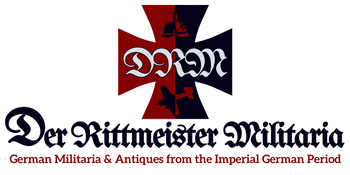Brunswick (Herzogtum Braunschweig)
CLICK HERE FOR ALL PRODUCTS RELATED TO BRUNSWICK
Basic Information
- Official Name: Duchy of Brunswick (Herzogtum Braunschweig)
- Capital: Braunschweig (Brunswick)
- Motto: "Nec aspera terrent" (Difficulties do not deter us)
- Established: 1815 as a duchy (earlier as the Principality of Brunswick-Wolfenbüttel in 1235)
- Dissolution: Transitioned to the Free State of Brunswick in 1918 following the abdication of Duke Ernest Augustus.
-
Key Symbols:
- Coat of Arms: A crowned blue lion on a gold field.
- Flag: Blue and yellow horizontal stripes.
Geographical Overview
-
Location:
Brunswick was located in northern Germany, bordered by Hanover to the west, Prussia to the east, and Saxony-Anhalt to the south. -
Size:
A relatively small state with a mix of agricultural lands, forests, and industrial areas. -
Land Features:
- Harz Mountains: Rich in minerals and a hub for mining.
- Oker River: Provided a vital waterway for trade and agriculture.
- Fertile plains that supported a strong agricultural economy.
Historical Timeline
-
Early Brunswick:
- 1235: Established as the Principality of Brunswick-Wolfenbüttel under the Welf dynasty.
- The principality was divided and reconfigured multiple times due to dynastic conflicts.
-
Duchy of Brunswick (1815–1918):
- 1815: Elevated to a duchy at the Congress of Vienna after the Napoleonic Wars.
- The duchy became a part of the German Confederation and later the North German Confederation.
- 1871: Brunswick joined the German Empire.
-
Decline (1918):
- The abdication of Duke Ernest Augustus during the German Revolution marked the end of the duchy, transitioning into the Free State of Brunswick.
Notable Rulers and Leaders
- Ferdinand (1735–1780): An Enlightenment ruler who modernized the state’s administration.
- Charles William Ferdinand (1780–1806): A military leader who died during the Napoleonic Wars.
- Ernest Augustus (1913–1918): The last duke, whose abdication ended the Welf dynasty’s rule over Brunswick.
Military and Political Strength
-
Military Contributions:
- Brunswick contributed troops to the Imperial German Army, including the renowned Black Brunswickers, a volunteer corps famous during the Napoleonic Wars.
- Its military insignia often featured the blue lion, symbolizing the duchy.
-
Political Role:
- As a small duchy, Brunswick had limited influence but remained loyal to the German Empire.
- The Welf dynasty’s ties to Britain (through the House of Hanover) added to its significance.
Cultural Contributions
-
Architecture:
- Dankwarderode Castle: A medieval castle in Braunschweig, symbolizing the duchy’s history.
- Brunswick Cathedral: A Romanesque cathedral and burial site for many Welf rulers.
-
Arts and Music:
- Brunswick was a center of Enlightenment thought, supporting composers like Johann Rosenmüller.
- Home to literary figures like Lessing, a leading playwright of the German Enlightenment.
-
Education and Science:
- Collegium Carolinum: An early technical school that evolved into the Technical University of Braunschweig, known for engineering and scientific research.
-
Cuisine:
- Famous for Braunschweiger sausage, a smoked liverwurst.
- Traditional dishes like Braunkohl mit Bregenwurst (kale and sausage).
Fall of Brunswick
-
World War I (1914–1918):
- Economic hardship and military losses led to unrest in Brunswick.
-
German Revolution (1918):
- The abdication of Duke Ernest Augustus led to the establishment of the Free State of Brunswick.
-
Post-WWII (1945):
- The state was absorbed into Lower Saxony in 1946.
Connections to Products
-
Military Memorabilia:
- Black Brunswickers Medals and Insignia, commemorating their bravery during the Napoleonic Wars.
- Brunswick military helmets with unique lion crests.
-
Cultural Artifacts:
- Historic maps and documents related to the Duchy’s governance.
- Replicas of Brunswick Cathedral or Dankwarderode Castle.
-
Art and Literature:
- Collectibles related to figures like Lessing, including editions of his plays and writings.
-
Culinary Memorabilia:
- Vintage Braunschweiger sausage advertisements or tools used in traditional sausage-making.













